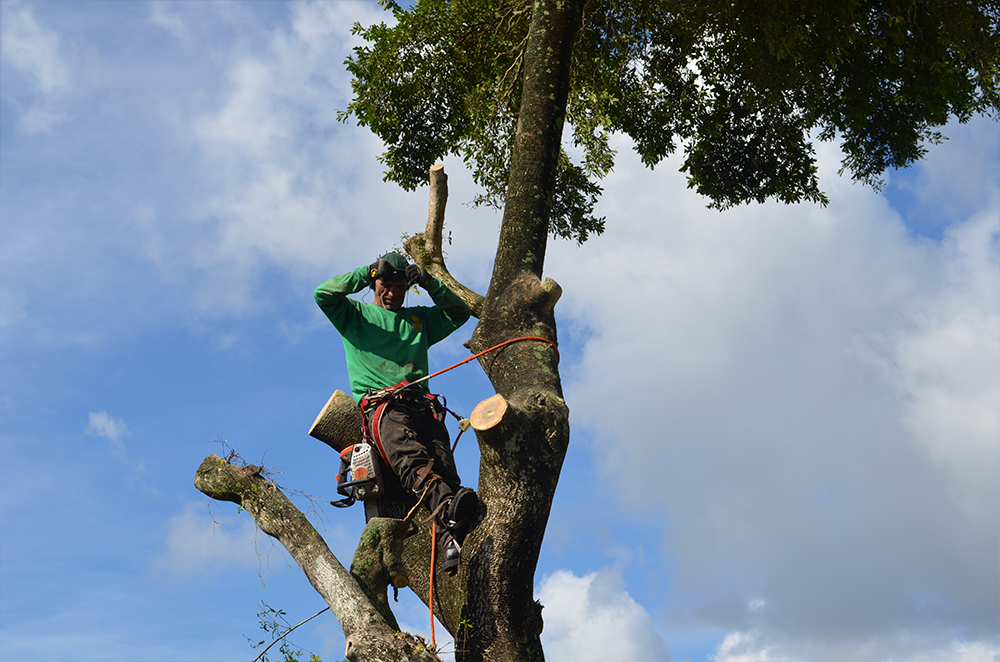As and shines through its leaves from ancient oak trees and soaring pines, a qualified tree care specialist starts their daily journey within the world of trees. For these dedicated professionals, each day holds new challenges and findings, ranging from evaluating tree wellness and managing urban landscapes. An arborist's work of an arborist extends well beyond just aesthetics; it's a combination of scientific knowledge, artistic talent, and environmental stewardship that plays a crucial role in maintaining the health and security of our green companions.
In this exploration of tree care chronicles, we'll explore deeply into the daily adventures of an arborist. Readers will discover why hiring a qualified expert matters, the intricate art of tree pruning, and the essential equipment that empower them for safeguard our trees. Whether it involves identifying tree diseases or conducting safe removals, these arborists are unsung champions in the quest for vibrant, healthy trees in the neighborhoods. Join us to we uncover the vital insights shared by these experts that dedicate their lives to the care and preservation of our city's forests.
A Importance of Engaging a Qualified Arborist
Hiring a certified arborist is essential for maintaining the health and safety of arboreal structures in both domestic and commercial landscapes. Certified arborist s have comprehensive understanding and training in arboreal maintenance, enabling them to assess the health of trees precisely and identify problems that may go ignored by the untrained eye. Their specialization ensures that trees are tended to using standard practices, which can greatly enhance their duration and beauty.
In addition to enhancing tree well-being, certified arborists play a crucial role in hazard administration. Trees can pose risks when they are sick, in distress, or improperly maintained. A certified arborist is equipped to spot potential hazards and suggest appropriate actions, whether it be pruning, cabling, or in some situations, disposal. Their skill to perform thorough tree inspections helps to prevent injury to property, injuries, and even disruptions to local ecosystems caused by hazardous trees.
Moreover, engaging a qualified arborist promotes eco-friendly tree care practices. These professionals are committed to teaching their clients about appropriate tree care techniques, which can lead to a better understanding of the ecosystem and the significance of trees in city settings. By collaborating with a certified arborist, individuals and businesses can guarantee that their trees benefit to the environment while also boosting property value and street appeal.

Tree Maintenance Strategies and Insights
Arborists possess a wealth of expertise about the best practices for cultivating tree vitality and safety. One key technique is correct pruning, which helps manage the expansion of a tree while supporting its general wellness. Arborists understand the multiple styles of pruning—such as thinning, heading, and crown reduction—and know the methods and when to use each technique. The art behind tree pruning is critical, as incorrect methods can lead to injury or illness, undermining the tree’s integrity.
Another integral aspect of an arborist's work is identifying tree diseases. They are educated to recognize symptoms of different tree illnesses and pests, allowing for prompt intervention. By assessing leaf color changes, bark qualities, and overall health, arborists can determine specific concerns and develop treatment strategies. Utilizing methods like soil tests and tree tissue samples, they provide thorough diagnoses that increase a tree's strength and sustainability.
In cities, arborists play a crucial role in tree protection and oversight. They apply techniques such as tree support and stabilization to protect trees that may be at threat of collapsing or suffering from structural instability. Additionally, they advocate for sustainable practices, making certain that trees contribute constructively to urban settings. This assistance helps lessen hazards while enhancing urban landscapes, making the role of an arborist not only important but necessary for thriving communities.
Security and Risk Management in Tree Care
Safety is paramount in the industry of tree care, as tree care often involves operating at heights and handling large, bulky machinery. Certified arborists undergo thorough education to understand the risks associated with ascension, trimming, and removing trees. They use personal protective equipment, including helmets, hand protection, and safety belts, to minimize the potential for harm. Awareness of the environment, effective communication with team members, and adherence to safety guidelines significantly lessen the chance of incidents on the job.
Hazard assessment is an essential aspect of an arborist's responsibilities. Before starting any tree care project, a thorough risk assessment is conducted to identify potential hazards, such as dead branches, dangerous trees, or power cables in the vicinity. Arborists examine these risks and implement strategies to reduce them, which may include cabling and bracing compromised structures or counseling clients on the best time to perform specific tasks. This proactive approach not only safeguards the arborists but also ensures the protection of property and individuals nearby.
Furthermore, the arborist's role broadens to informing clients about the dangers of DIY tree work. Many property owners underestimate the dangers involved in tree care and may not be aware of hazardous situations that require professional intervention. Arborists provide valuable advice on how to care for tree health safely and stress the importance of hiring trained professionals to avoid accidents and ensure the durability of their trees. By focusing on safety and hazard control, arborists shield themselves, their clients, and the urban environment they support.
